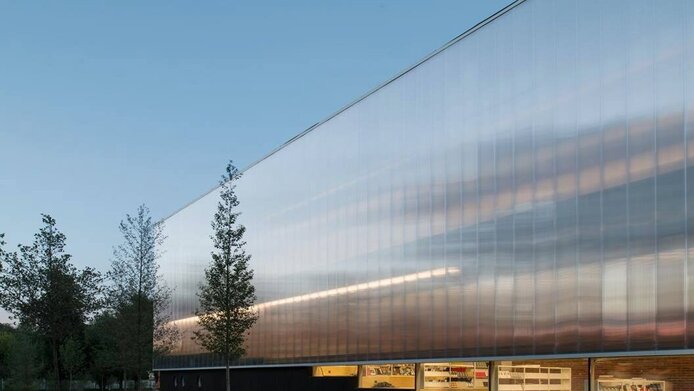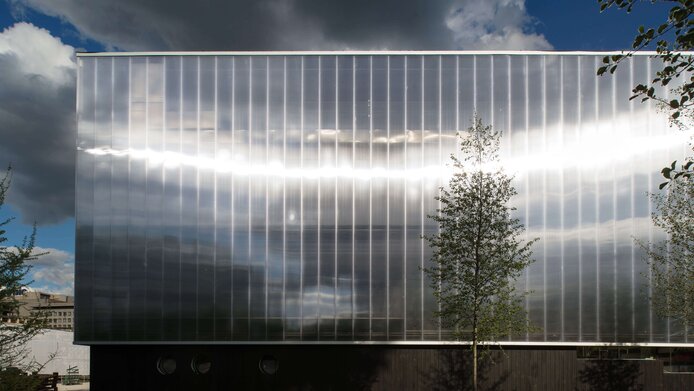A post-Soviet art boom

Prior to the Crimean crisis, Russia experienced a boom in the construction of new museums and restructuring and renovation of existing ones: from Moscow to St. Petersburg, museums were being (re)developed by internationally renowned architects like Rem Koolhaas, Renzo Piano and Shigeru Ban. These buildings and political programmes demonstrate the great store the government sets by museum buildings as a means of generating impetus for renewal. "For a long time there was no institutional space available for contemporary art movements in Russia. And now dozens of ambitious new facilities compete with each other. Yet very little research was previously carried out on the complete transformation of the Russian art market and museums since perestroika," explains Waltraud Bayer from the Department of History at the University of Graz. A project funded by the Austrian Science Fund FWF currently researches and analyses the development of museums of contemporary art in Russia from perestroika to the present day.
Art, capital & politics
The project examines the complex relationships between art, economic capital and political power in Russia for the first time. It focuses specifically on the development of contemporary art museums – from the earliest initiatives under Gorbachev to a fundamentally new approach to museum planning. The study includes key cultural-policy requirements and programmes. In addition, it examines the driving forces behind this institutionalisation process: the members of the federal, regional and local cultural bureaucracies, the representatives of the new economic elites, and the individuals who have had a sustained influence on the process. From the large number of important events associated with this development, Bayer singles out two: "The first international art auction by Sotheby's in Moscow is generally considered a turning point, a milestone. It triggered a change in thinking at the political level whereby modern art was no longer exclusively associated with political resistance, and its potential for generating value was also acknowledged," explains the museum historian. The second milestone came in 2005 with the staging of the first Moscow Biennale of Contemporary Art.
Milestone: The Moscow Biennale
The first Biennale in 2005 was a success. A small circle of experts had been preparing the ground for it with great enthusiasm for many years. The event brought contemporary art to a larger audience in Russia for the first time and triggered a broad public response. "Contemporary art was no longer marginalised and gradually became part of the societal mainstream. A boom then followed, in which concrete measures, the establishment of new facilities and restructuring of old ones, emerged. This lasted until the crisis in the Crimea. The significance of these achievements is underscored by the fact that they were attained in the face of resistance from the general public, political circles and the Orthodox Church," explains Bayer. At an international conference held in Graz, the FWF project discussed this wide-ranging development across the entire Russian region for the first time with renowned experts.
Research in Russia
The analysis draws on material collected through comprehensive research in post-Soviet state and municipal archives, foundations and museums. One unique data source became available to the project fortuitously, the website open.gov.ru. President Medvedev initiated the creation of web portals and websites with a view to establishing a more transparent and modern administration; the cultural sector was a particular beneficiary of this measure. As a result, a large volume of previously unknown official material became available for the project. Data from the websites of private foundations and initiatives, blogs and the digital editions of cultural media have also been processed and analysed. The results of this interdisciplinary research project are being published internationally and will provide valuable contributions for further research on the institutionalisation of contemporary art.
Personal details Waltraud M. Bayer is a senior post-doctoral researcher and lecturer at the University of Graz. She is an expert in Eastern European Cultural and Museum Studies and works on a wide range of topics: museums, foundations, collections, patronage, art market, looted art and restitution research. A Fulbright scholar and recipient of a Hertha-Firnberg scholarship, she completed her doctorate at the University of Vienna in 1990 and since her graduate studies at the Academy of Sciences in Moscow she has undertaken numerous research trips to the Russian Federation and the post-Soviet space. She has already received many prizes and awards for her research, the latest of which is a Norton T. and Nancy Dodge Fellowship.
Publications






